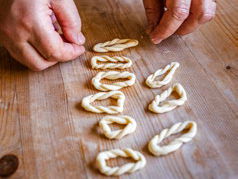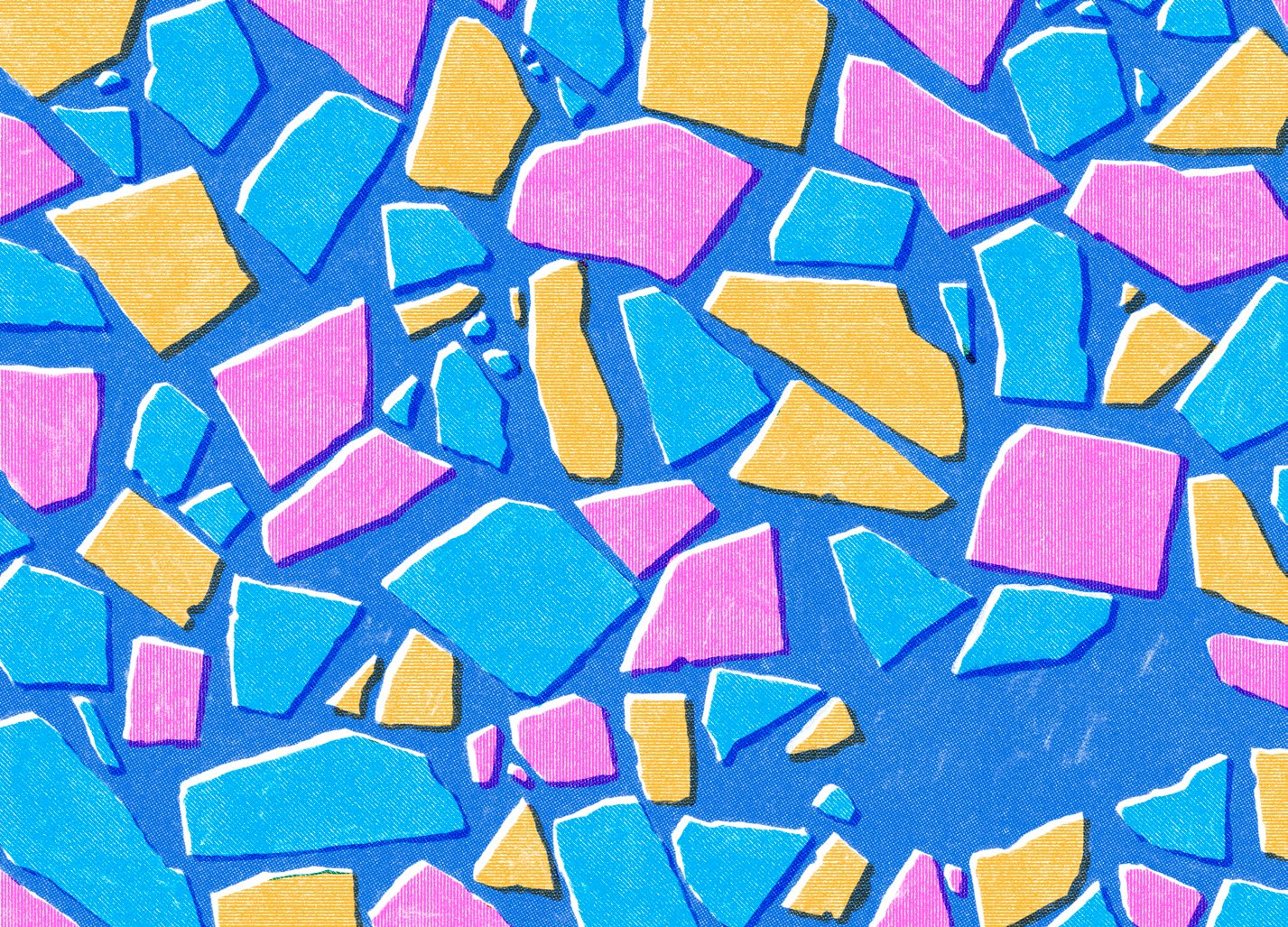Busiate, Trofie, E Lorighittas
Busiate, Trofie, E Lorighittas
Long Fusilli, Short Fusilli, and Intersecting Rings
This recipe incorporates some extra-virgin olive oil into a basic flour-and-water dough. The oil contributes to the dough’s pliability, useful for beginners making pasta that can “stretch” into intricate shapes like busiate, trofie, and lorighittas. Pros won’t need it and can omit the oil. You’ll need a bamboo or wooden skewer or knitting needle for shaping the busiate. And, ideally, you’ll want to recruit some extra hands to help you shape the lorighittas. The recipe makes well over 200 pieces!
Ingredients (4)
Ingredients (4)
Instructions
Dough Preparation
Pour the fine semolina (2 ⅔ cups) into a bowl and make a well in the middle. Add the water (¾ cup) and oil (2 tsp) to the well, then mix with a fork, working from the edges of the well into the center, gradually incorporating the semolina to form a shaggy dough.
Knead the dough energetically until it becomes a smooth, compact mass, 10 to 12 minutes.
Wrap the dough in plastic wrap and allow it to rest at room temperature for 30 minutes.
Unwrap the dough and knead again for 10 minutes more.
To shape busiate
Working in batches so the dough doesn’t dry out, roll the dough into a long strand the thickness of the wooden skewer, about 1/8 inch. Cut the strand into 6-inch-long pieces.
Position a piece of dough diagonally on your work surface. Place a skewer or knitting needle horizontally across the top at 3 o’clock and 9 o’clock. Place one hand at each end of the skewer and roll it toward your body while gently pressing into the dough so the dough wraps uniformly around the skewer, forming a spiral piece of pasta.
Slide the pasta off the skewer and set aside on a clean, dry wooden surface or a clean kitchen towel dusted with semolina. If the dough sticks, flour it with a dusting of fine semolina, then roll it out again. Repeat with the remaining dough.
To shape trofie
Working in batches, take a fist-size piece of dough and hold it in your non-dominant hand. Pinch off a hazelnut-size piece of dough and place it on your work surface.
Using the center of your palm, roll the dough piece up and down to form a strand approximately 2 inches long with tapered ends. Do not lift your hand while rolling.
Using the edge of one hand, drag the pasta against the work surface toward you at a 45-degree angle, forming a corkscrew shape. Set aside on a clean, dry wooden surface or a clean kitchen towel dusted with semolina. Repeat with the remaining dough.
To shape lorighittas
When you have worked your shaping technique to an advanced level, you can shape lorighittas as they do in Sardinia: by rolling the rope from the whole ball of dough. Until then, tear off a walnut-size piece of dough, and roll the dough into a rope 1/16 inch thick and 12 to 16 inches long.
Hold one end between the index finger and thumb of your nondominant hand. Wrap the dough twice around the tips of your index and middle fingers and pinch the ends together to form two loops connected at the top.
Working from each end, roll the pasta strands to create a medium-tight chain. Set aside on a clean, dry wooden surface or a clean kitchen towel dusted with semolina. Repeat with the remaining dough.
To cook all shapes
Bring a large pot of water to a rolling boil over high heat. Salt the water until it tastes like a seasoned soup.
Add the pasta and cook until the raw bite is gone, 3 to 4 minutes.
Serve with the recommended sauce; from the pasta chapter, or a sauce of your choosing.
Notes
Notes
Because the dough must relax to the ideal point for shaping, I recommend using it as soon as you are able to pull a strand apart without it breaking immediately. If it does break, continue kneading, checking every few minutes or so to see if it is elastic enough.

